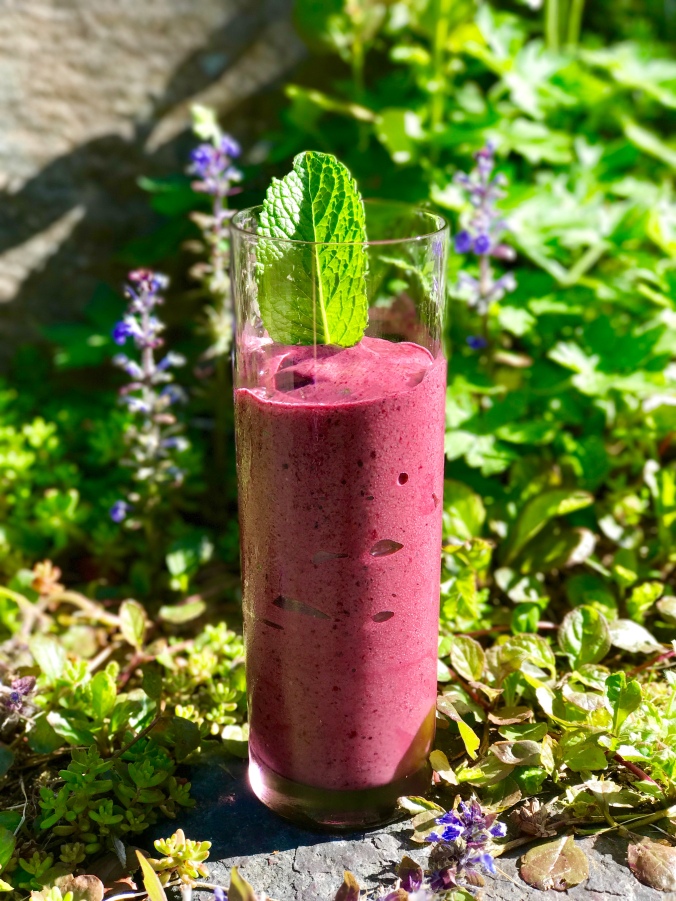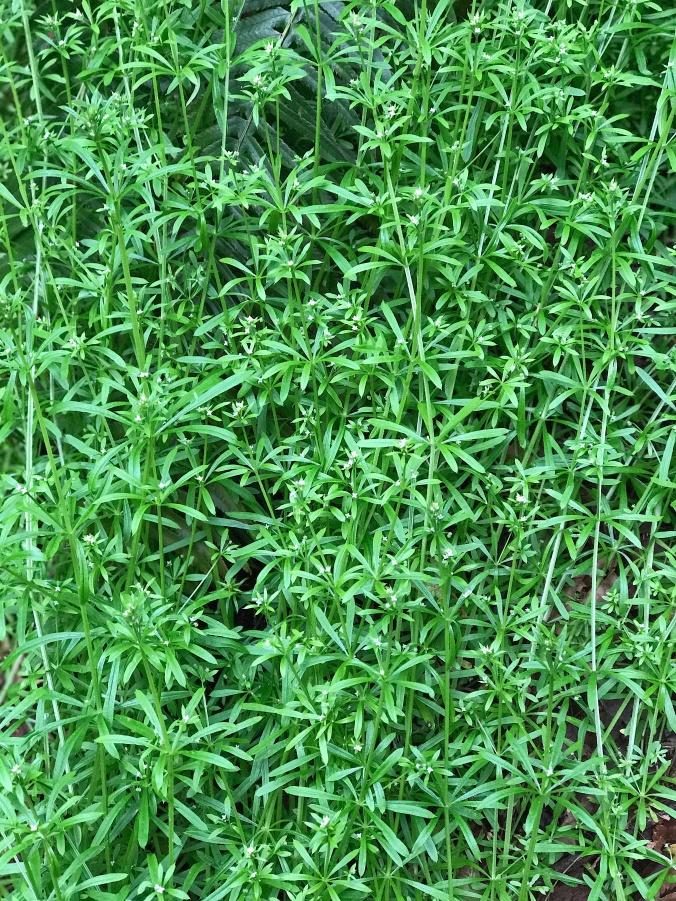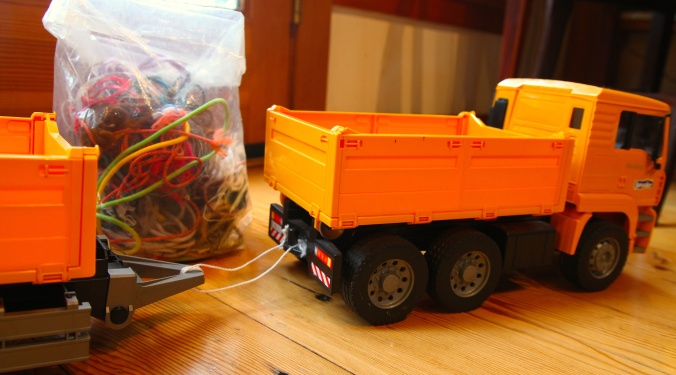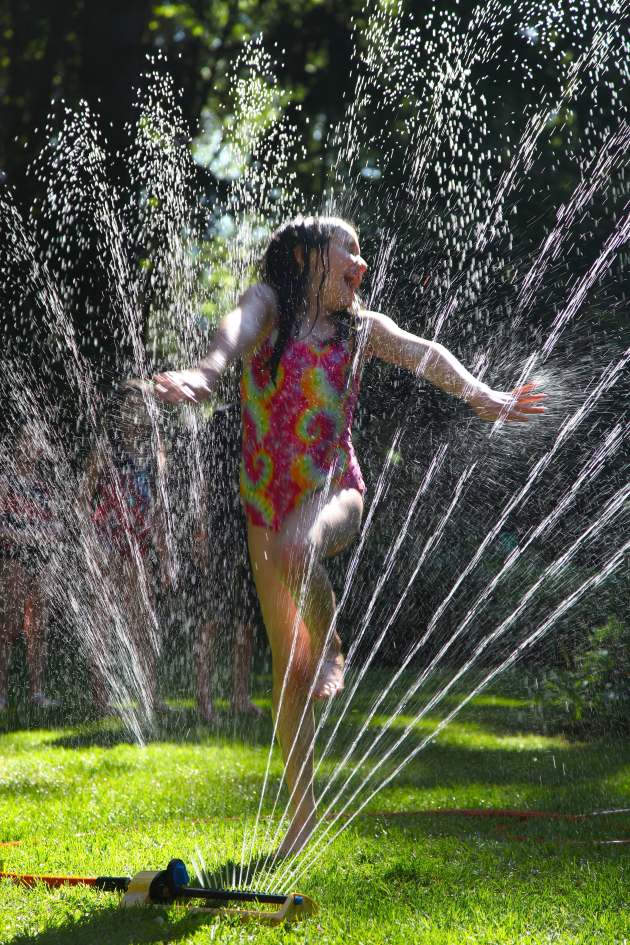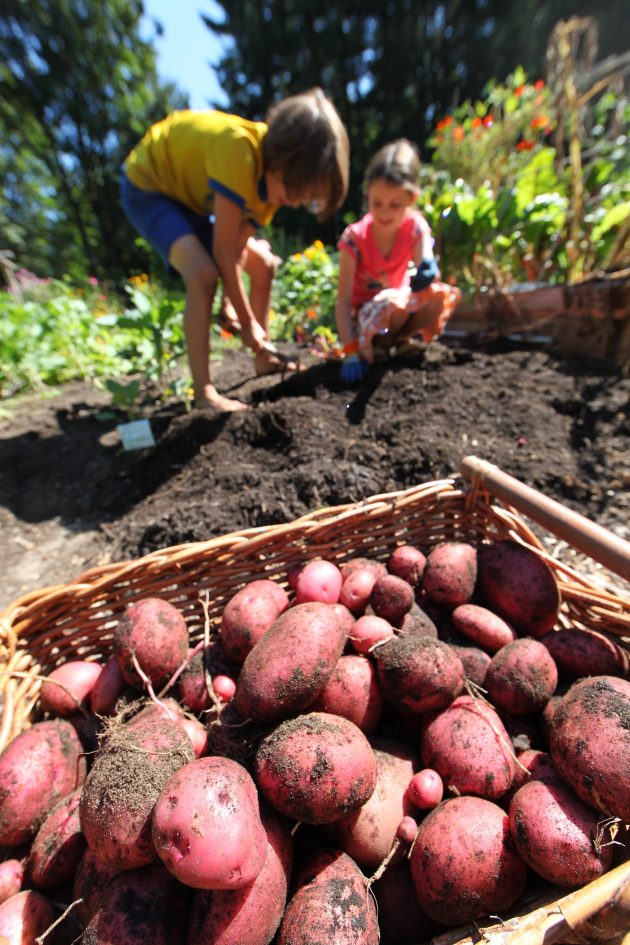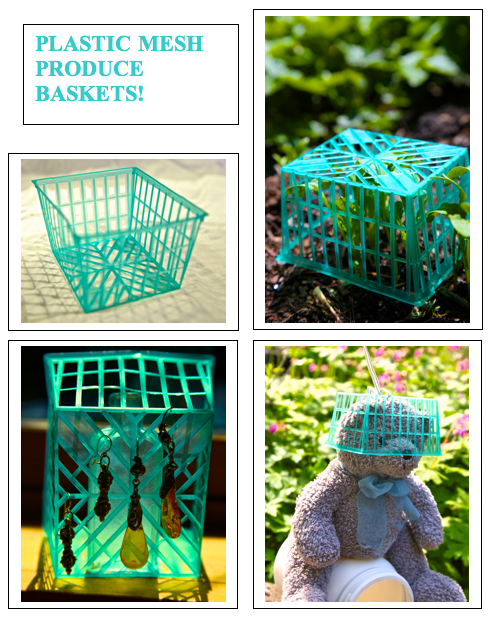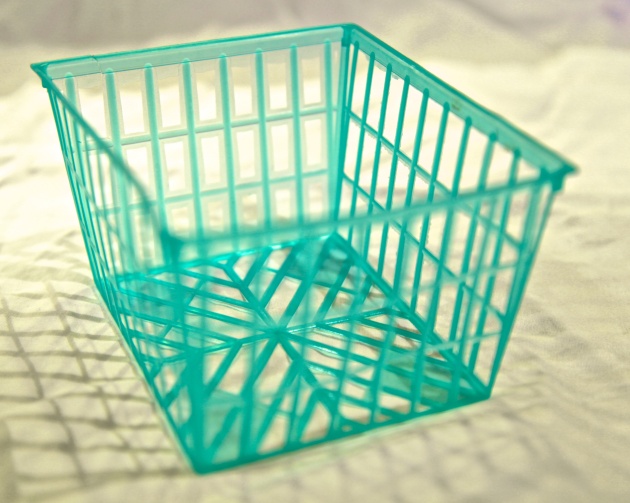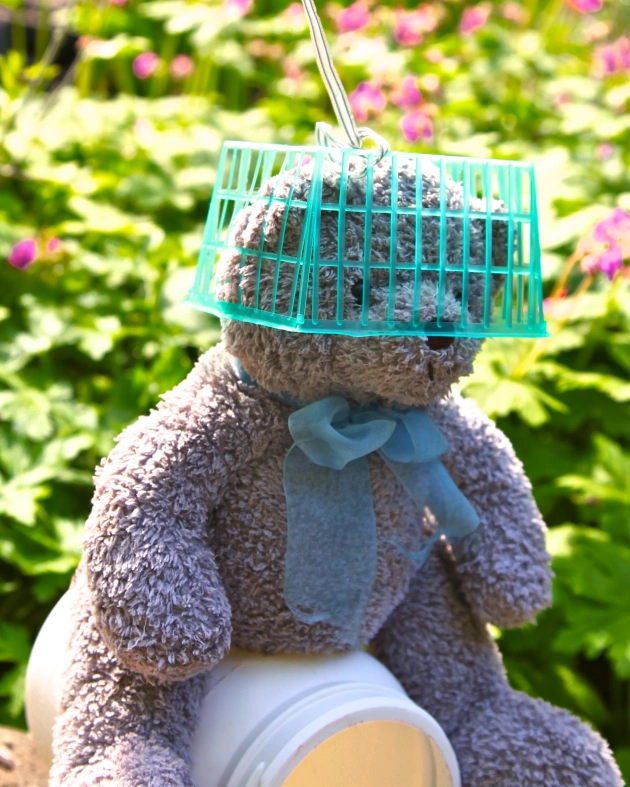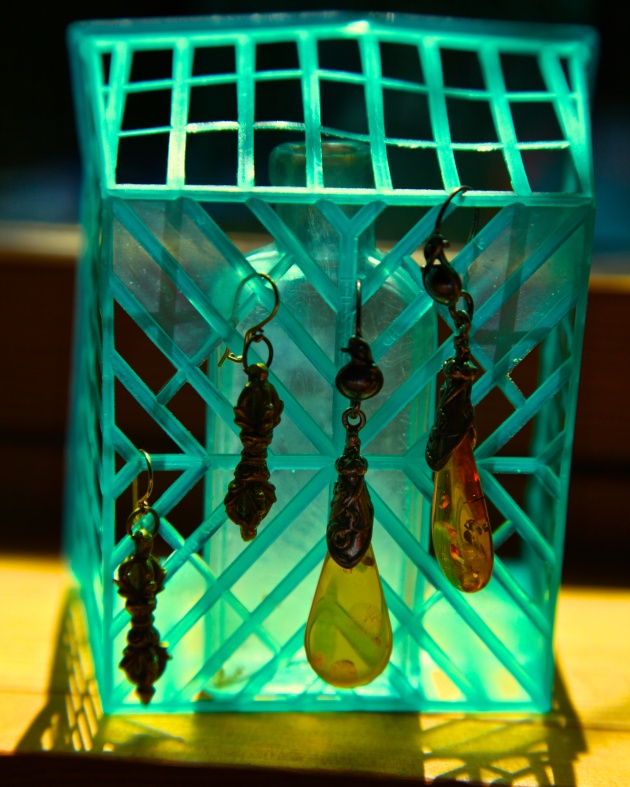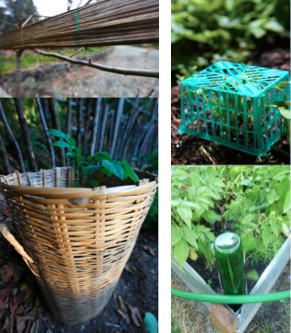
There may be items in your trash that could help you with your gardening. Check out this list and see if any of these great ideas resonate with you, helping you pull a couple things out of your trash and, well, into your garden to green up your world. If you don’t have these items in your trash, ask for them on your local Buy Nothing group. I’ve categorized the ideas by item, and each one links to a unique reuse. Enjoy!
Plastic Bottles:
1) Plastic Bottle Mosquito Trap: This one is a trick using yeast and a cut bottle glued together. Read on and try it.
2) Plastic Bottle Cloche: It’s as easy as cutting a plastic bottle in half and sticking it upside down over your seedling or plant.
3) Plastic Bottle Self-Watering Seed Starters: These plastic bottles, cut in half and one inverted inside the other have a wicking system worth checking out.
4) Plastic Bottle Drip Irrigation System: 4 small holes in your 2-liter bottle that’s buried in the ground provide excellent watering for your plants.
5) Plastic Bottle Greenhouse: A greenhouse like this is a true inspiration.
Milk Jugs:
6) Milk Jug Scoop: Milk or OJ jugs make easy scoops.
7) Milk Jug Cloches: Use Milk Jugs to protect your larger plants. Just cut the bottom out of the milk jug, turn it upside down and it’ll protect your plants.
8) Milk Jug Mini Greenhouses: These mini greenhouses in gallon jugs can prove useful.
Clear Plastic Containers:
9) Plastic Container Mini Greenhouse: Just turn it upside down and you have a mini cloche/greenhouse.
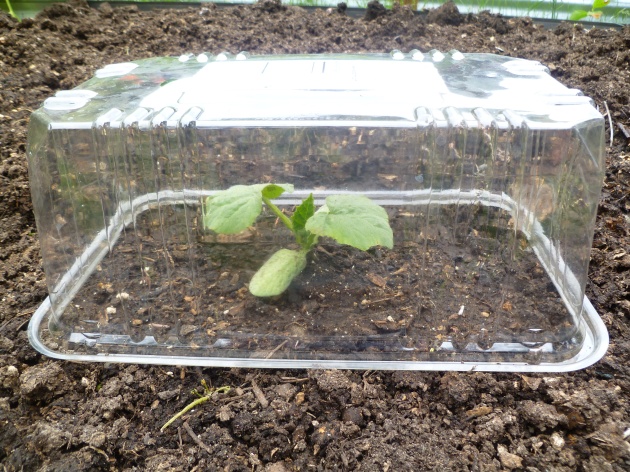
Cereal Boxes & Cracker Boxes:
10) Cardboard Weed Block: Take your cereal boxes and cracker boxes to the garden and use them as weed blocking.
Bike Wheels:
11) Bike Wheel Trellis: Bike wheel trellises are beautiful.
DVDs/CDs:
12) DVD/CD Bird Scaring Trick: Birds don’t like reflective stuff. It scares them off. Put a few around your berries and you’ll keep those peckers away.
Mailboxes:
13) Mailbox Garden Tool Cache: Post an old mailbox up in your garden, and you have a water-proof place to store hand tools, planter markers, and your notes.

Drawers:
14) Drawer Seedling Starter: This one’s easy. Just use an old drawer as a seedling planter box.
OJ Cans:
15) OJ Can Plant Labels: The can tops make pretty labels for marking your rows.
Rain Boots:
16) Rain Boot Planters: Save a few pairs of the kids cute rain boots for whimsical planters.
Plastic Plant Pots:
17) Plastic Plant Pot Flowers: Add a little flair to your outdoor space with these plant pot flowers.
Trash Cans:
18) Trash Can Root Cellar: I’m interested in trying this for storing our potatoes, carrots, daikon radish, turnips and cabbages next year. It simply requires digging a deep hole.
Tupperware Tubs:
19) Tupperware Worm Farm: Make a few holes in your old Tupperware bins, order a few hundred red worms, follow the instructions here and you’ll have a worm farm.
Plastic Bottle Caps:
20) Plastic Bottle Cap Lawn Flowers: Michele Stitzlein creates beautiful blooms from plastic caps. She’s published a couple of books on plastic cap art, too.
Glassware:
21) Glassware Flowers: These bowls and dishes are all the rage.
Garden Hoses:
22) Garden Hose Flowers: If you have space on a wall, you could create flowery art from your old hoses.
Twist Ties:
23) Twist Tie Plant Trainers: Save your twist ties to use for training plants to fences and stakes.

Soda Cans:
24) Soda Can Planters: In a pinch, soda cans can be used as planters and seed starters.
25) Pop Can Plant Markers: With a little effort, you can make some pretty markers for your garden.
Styrofoam:
26) Styrofoam Planter Filler: Fill the bottom of your large plant pots with styrofoam so they don’t get too heavy.

PVC
27) PVC Garden Tower: Drill holes in a PVC tube and you have a strawberry planter
Coaxial Cables:
28) Coaxial Cable Fence: Who knew that a coaxial cable could look so pretty with bamboo?

Wine Bottles:
29) Wine Bottle Waterer: Turn your empties upside down (with H2O in them) in your plant pots and go on vacation!
30) Wine Bottle Garden Edging: Wine bottles can make colorful garden edging.
31) Wine Bottle Hose Guard: A wine bottle and a stick are all that’s needed to keep your hose out of your garden beds.

Clementine Boxes:
32) Clementine Box Planters: Clementine boxes make excellent seedling starter boxes or planters for forced bulbs.
Blue Jeans:
33) Blue Jeans Garden Apron: Sew yourself a simple garden apron from an old pair of jeans that can hold your garden tools.
Plastic Mesh Produce Basket:
34) Plastic Mesh Seedling Saver: We use these baskets to prevent slugs and birds from destroying our seedlings.
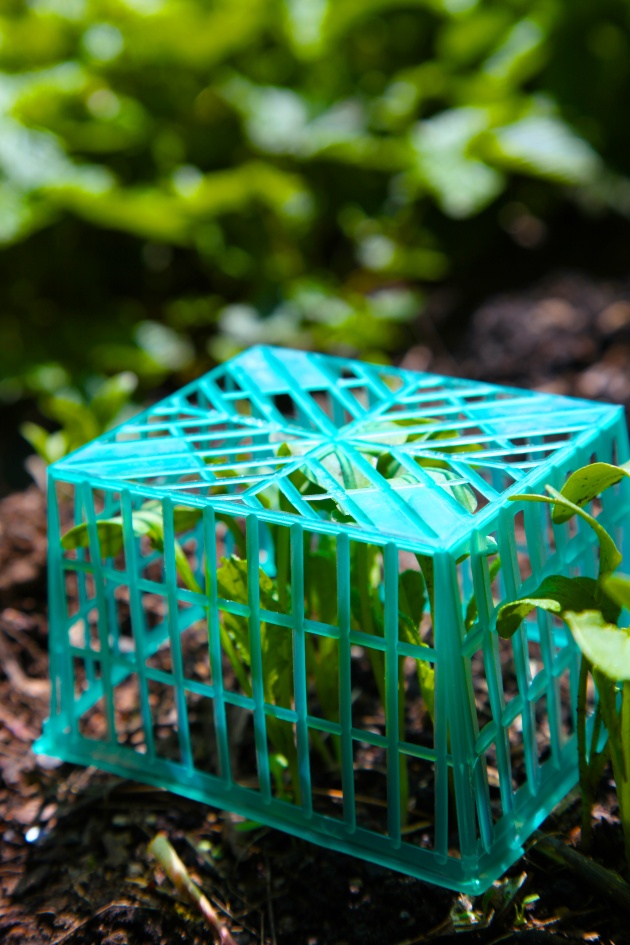
Windows:
35) Windows Greenhouse: This is a simple design for a small greenhouse made from windows.
36) Window Frame Trellis: An old window frame with mullions makes a pretty trellis.
Broken Ceramics:
37) Broken Ceramics Pot Drainage: Put your broken ceramic pieces in the bottom of plant pots for added drainage.
38) Plant Your Broken Dishes: Plant your favorite broken dishes in the garden and enjoy them throughout the growing season.
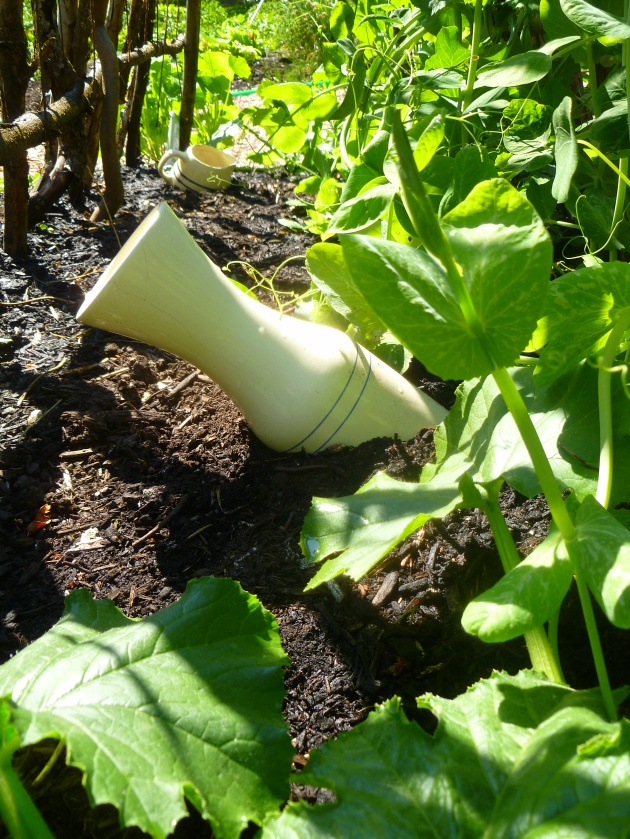
Broken Pot Planter: When our ceramic pots break, I plant them in our garden along with something planted to look as if it’s spilling out of the pot, having grown there over time.
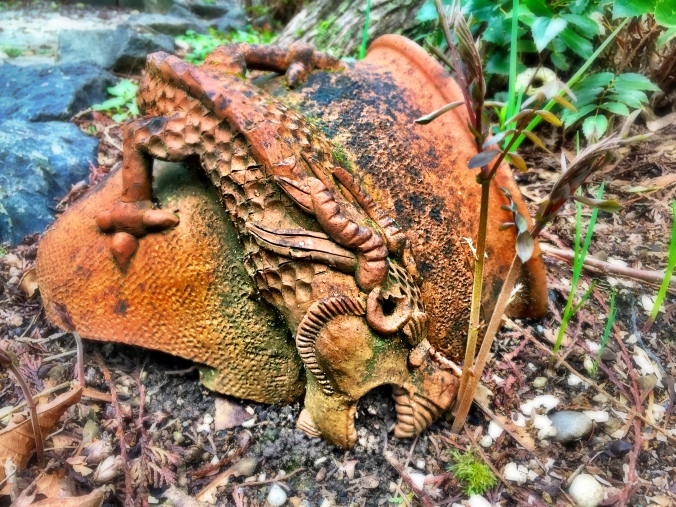
Paint Cans:
39) Paint Can Planters: I love these paint cans turned planters at my friend Maya’s house in Tsarang, Upper Mustang, Nepal.

Laundry Hampers:
40) Laundry Hamper Potato Planter: I planted potatoes inside an old laundry hamper and the harvest was easy.

Skis:
41) Ski Fence: If anyone lives in the Seattle area and wants to make one of these, please contact us as we have several hundred skis at the end of our Rotary Auction.
Window Blinds:
42) Mini Blind Plant Markers: These look really easy to make.
Panty Hose:
43) Panty Hose Deer Repellant: If you place a bar of soap inside the foot of old panty hose and hang it from your apple tree, it should deter the deer from nibbling on your tree. You can also use a single child’s mitten for this, as it looks cute and either put the perfumed soap inside or human hair (they don’t like the smell of humans.)
Headboards:
44) Headboard Trellis: A headboard makes a beautiful pea trellis.
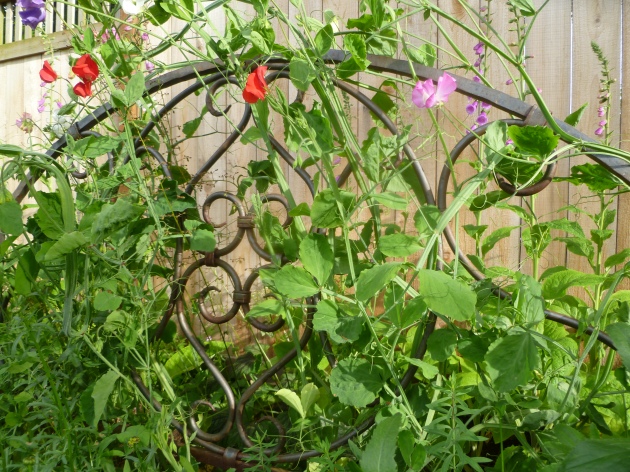
Newspaper:
45) Newspaper Garden Uses: There are many reuses for newspaper in the garden.
Cassette Tapes:
46) Cassette Tape Bird Deterrent: Pull the tape out of your cassette and string it over your garden. Birds hate the reflective quality of the tape.
Pet Food Bags:
47) Feed Bag Tarp: Sew your plastic woven pet food bags together into a tarp for garden needs.
Toilet Paper Tubes:
48) TP Tube Seedling Starters: Start your seeds in a tube filled with soil.
Sponges:
49) Sponges in Plant Pots: Cut up your old sponges and place them in the bottom of plant pots. They’ll hold moisture for a long time.
Kiddie Pools:
50) Kiddie Pool Raised Bed Garden: Hard plastic kiddie pools make excellent raised bed gardens.
What do you reuse in your garden? Help me add to the list.






